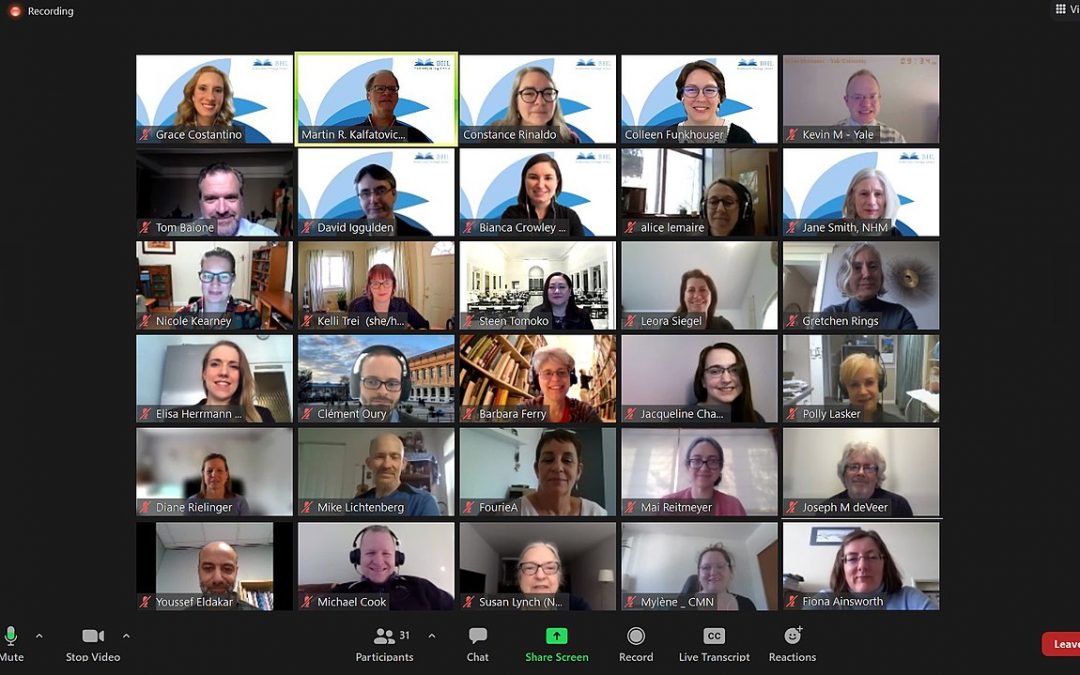Summary
Facilitating large virtual groups is hard. Starling and Liz offer some ideas on how to do it well.
Today’s blog post is by Starling Jaquan (with some help from Liz Roberts), two of ITK’s newest certified facilitators!
In today’s world where remote collaboration has become the norm, facilitating a large group presents its own unique set on challenges. In this context we are defining a large group as a group of 20+ people. In this post we will explore best practices for facilitating large online meetings, drawing upon past experiences and proven techniques to help you navigate this complex terrain.
The Challenge of Large Meetings
Before diving into best practices let’s explore why facilitating large meetings can be particularly challenging in the online realm.
- Simultaneous Voices. In a large meeting multiple participants may chime in at the same time which can lead to confusion among meeting attendees.
- Increased Opportunity for Disagreement. As the group size grows, so does the potential for differing opinions to come to light. These disagreements offer the opportunity to resolve conflict and come to shared understanding.
- Uneven Participation. In a remote meeting, not all participants may actively engage or vocalize their thoughts, leading to valuable input being missed and not contributed.
Before the Meeting
Consider using breakout rooms Breakout rooms offer the opportunity for more intimate discussion where team members may feel more comfortable sharing their thoughts and ideas. In this smaller setting, the dynamics change, and voices that might have stayed silent in a larger group may start to chime in.
Have a Co-Facilitator (or multiple!) Having a co-facilitator (or multiple) by your side is like having a trusted companion on an epic journey. Your co-facilitator(s) can help share the workload and responsibilities of navigating the vast landscape of a large group. Before you and your co-facilitator go into the meeting discuss what roles you might take – one person can monitor the virtual board while the other keeps an eye on the chat.
Understand Technology Limitations Some participants may not be familiar with the technology (Mural, for example), or may not be able to access certain online tools. Or maybe the information is too sensitive to be posted in certain channels. As the facilitator, you’ll need to be prepared to explain the landscape and ensure everyone is up to speed.
During the Meeting
Embrace the Silence In the midst of a virtual meeting, silence can be a powerful ally. Instead of fearing it, embrace it. Allow for moments of quiet reflection. These moments give participants the space to think, to digest, and ultimately to speak up.
Monitor the Chat If you are using a system that provides chat capability as well as audio & video, think of the chat as a parallel dimension where voices are typed rather than spoken. In large groups time is precious and not everyone may have the chance to unmute their microphone. This is where chat comes to the rescue. Having a facilitator dedicated to monitoring the chat ensures that no ideas go unnoticed.
Encourage Use of Cameras In the virtual realm cameras can be your window into participants thoughts and emotions. Encourage those who are comfortable to turn on their cameras. It’s like flipping the lights on in a dark room – suddenly you can see the expressions, reactions, and connections that were previously hidden.
Acknowledge Contributions In a sea of voices finding common ground can be like discovering treasure. Encourage team members to acknowledge ideas they resonate with. This helps team members feel that their input is being valued fostering a sense of camaraderie and collaboration.
After the Meeting
Asynchronous Input If you’re using a virtual whiteboard (like Mural), keep it open for additional input even after the meeting, allowing those who were not present during the meeting to contribute. This also allows for people to add in ideas that pop into their head after the workshop.
In conclusion, successfully facilitating a large online meeting is similar to embarking on an epic journey. With careful planning, effective use of technology, and a commitment to inclusivity, you can navigate the challenges and turn these gatherings into opportunities s for innovation and success.

